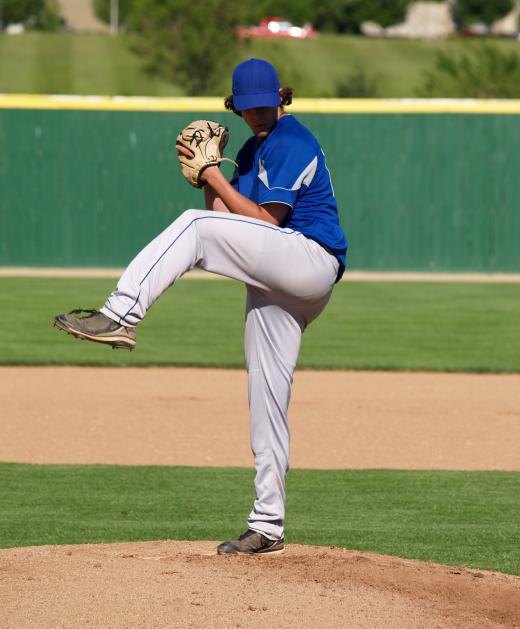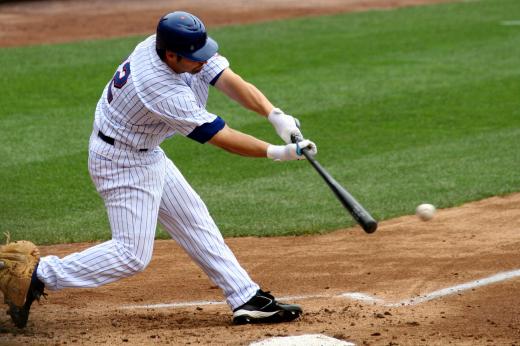At Sports&Hobbies, we're committed to delivering accurate, trustworthy information. Our expert-authored content is rigorously fact-checked and sourced from credible authorities. Discover how we uphold the highest standards in providing you with reliable knowledge.
What are the Different Parts of a Baseball Field?
Though it may not seem like it on first glance, a baseball field is not just a wide open space big enough to keep the ball in play. There are several features unique to a baseball field that allow the game to be played properly and safely. Though baseball fields vary in size and dimensions, every baseball field fit for official games feature similar features and prominent markings that make the game safe, efficient, and fun for all participants.
Generally, the baseball field is split into three sections: the infield, the outfield, and foul territory. The infield section of a baseball field is the part of the field closest to the batter’s box, or the area in which the batter stands to attempt to hit the baseball. Within the infield lies the pitcher’s mound, which is a round, dirt area that rises up from the rest of the infield and on which the pitcher stands to hurl the ball toward the batter. The pitcher’s rubber is fixed in the middle of the mound and is measured sixty feet, six inches from home plate.

The infield grass is the section of the baseball field in front of the fielders. It serves to slow batted balls down before reaching the fielders and can often contribute to bad bounces and strange plays. The infielders stand in the infield dirt, which is the section between the infield grass and the outfield grass. The baselines serve as the perimeter of the infield grass and are marked with chalk; after hitting the ball, the batter must run to first base within a certain distance of the chalk line or he can be called out for running outside of the baseline.

Beyond the infield lies the outfield of the baseball field. This grassy area can vary in size depending on the dimensions of the ballpark, but it is always bordered by the outfield fence – a high wall meant to determine whether a batted ball is a home run. If it goes over the fence, it is a home run, as long as it is in between the two foul poles, which mark the beginning of foul territory. At the base of the fence is the warning track, a section of dirt that stretches from the base of the fence to the fringe of the outfield grass. It lets an outfielder know he is approaching the wall while he searches for a fly ball in the air.

Foul territory in a baseball field is any area that the ball reaches after being batted that is not in play – in other words, the play is dead and no runners may advance if the ball lands in foul territory. Foul territory in a baseball field extends behind the batter’s box and outside the baselines all the way to the outfield fence.
The on-deck circle on a baseball field lies in foul territory near each team’s dugout and is meant to delineate where a batter who is going to bat next may stand to warm up. The coach’s boxes sit outside first and third base and indicate where the base coaches may stand while their team is batting. There are other minor features that may vary depending on the baseball field, but these are the features required to play the game properly and safely.
AS FEATURED ON:
AS FEATURED ON:














Discussion Comments
I have a little food for thought. Baseball field covers should include tarps for the outfield as well as the infield. I know keeping the infield dry is more important than keeping the outfield dry, but there is no reason both can't be covered.
I love the look of a well manicured baseball field. When I go to watch a game I am always judging the field maintenance crews by the way the field looks. While the game is the most important aspect of baseball, the quality of the field is at the top of my list of important considerations.
The infield section of baseball fields have changed for youth leagues and school leagues over the years. Colleges and professionals have had well manicured grass fields for a long time, but when I came up playing Little League baseball and high school baseball we played on dirt infields.
Some of the infields were hard packed clay and judging the bounce of the ball was not difficult since the hops were usually consistent. Then on the other hand, there were fields with little pebbles mixed in with the clay and when the ball hit one of those pebbles you never knew where it was going.
Many of these youth leagues didn't have good baseball field maintenance crews and they didn't have baseball infield tarps so the field would get wet and muddy and that made matters even worse.
Post your comments